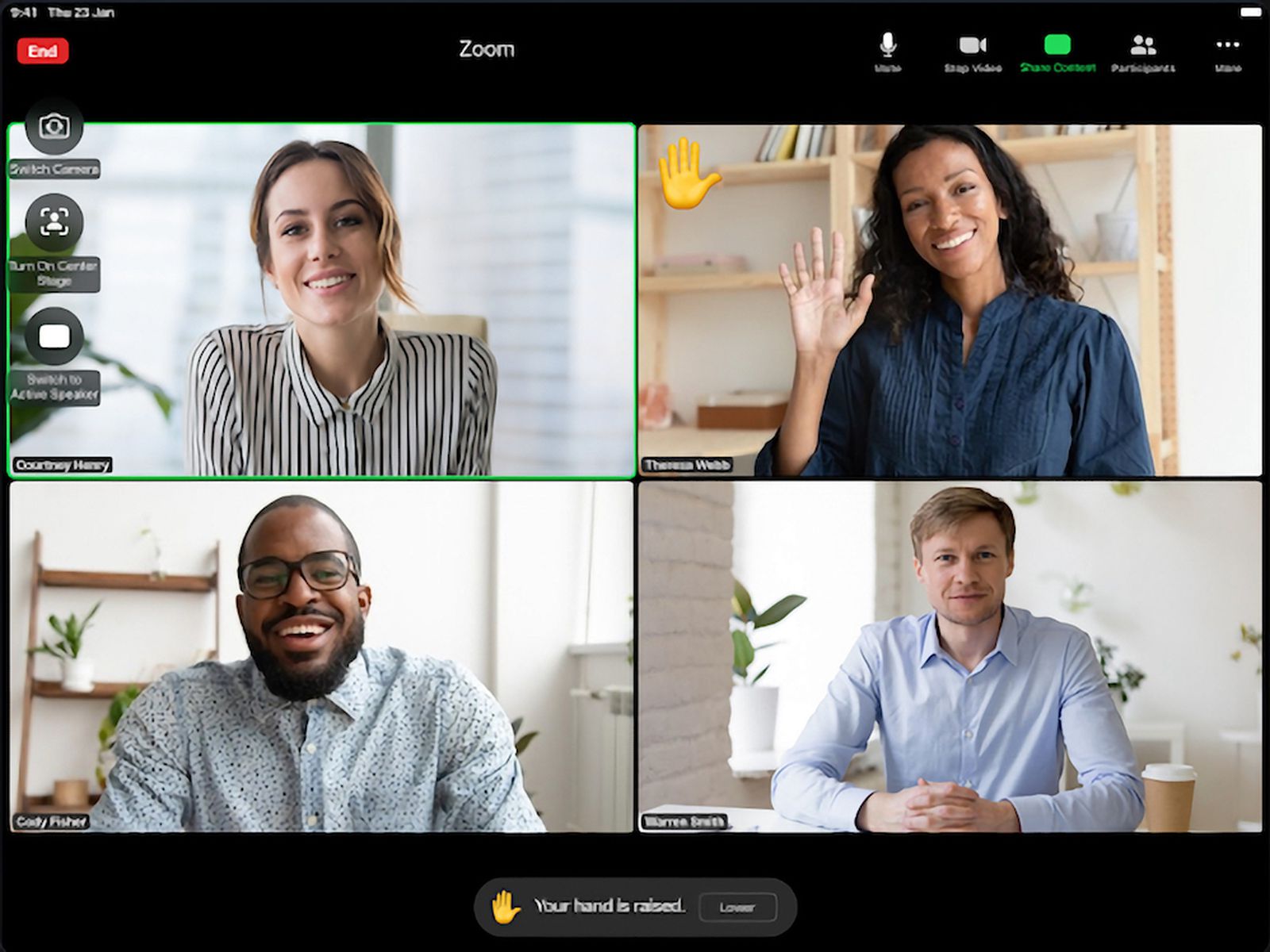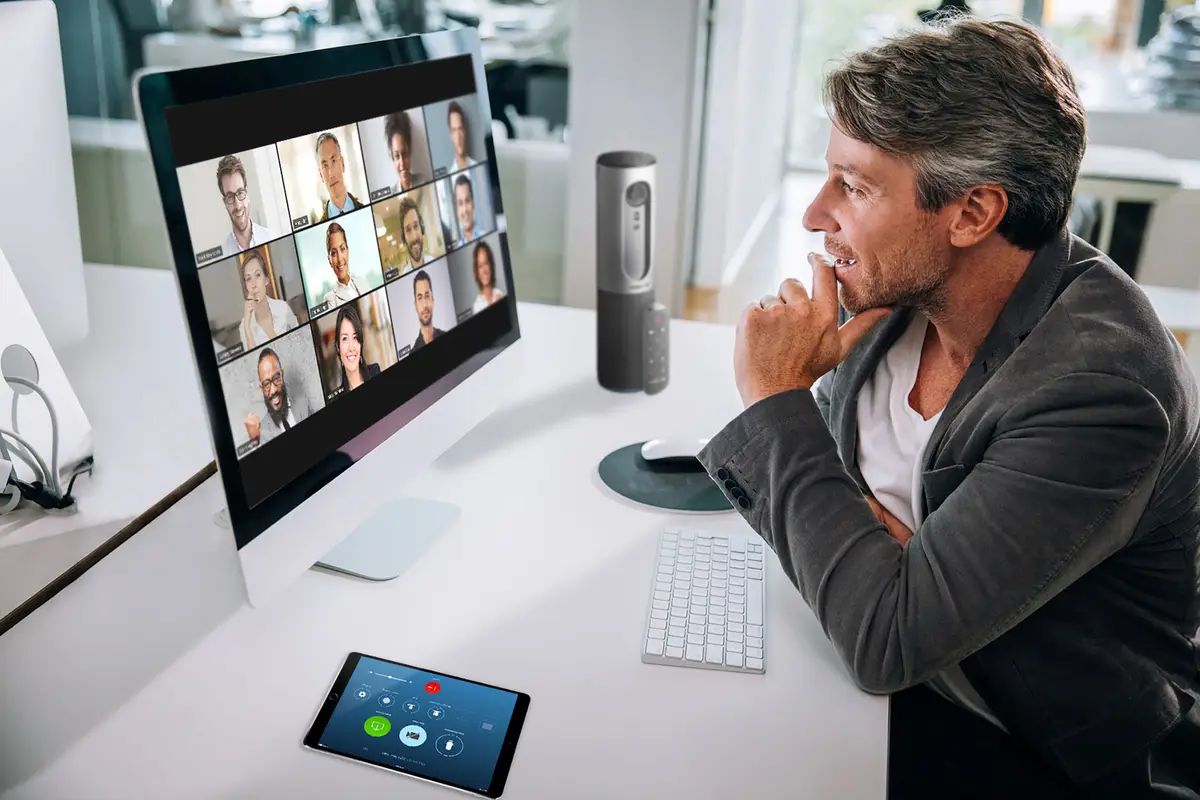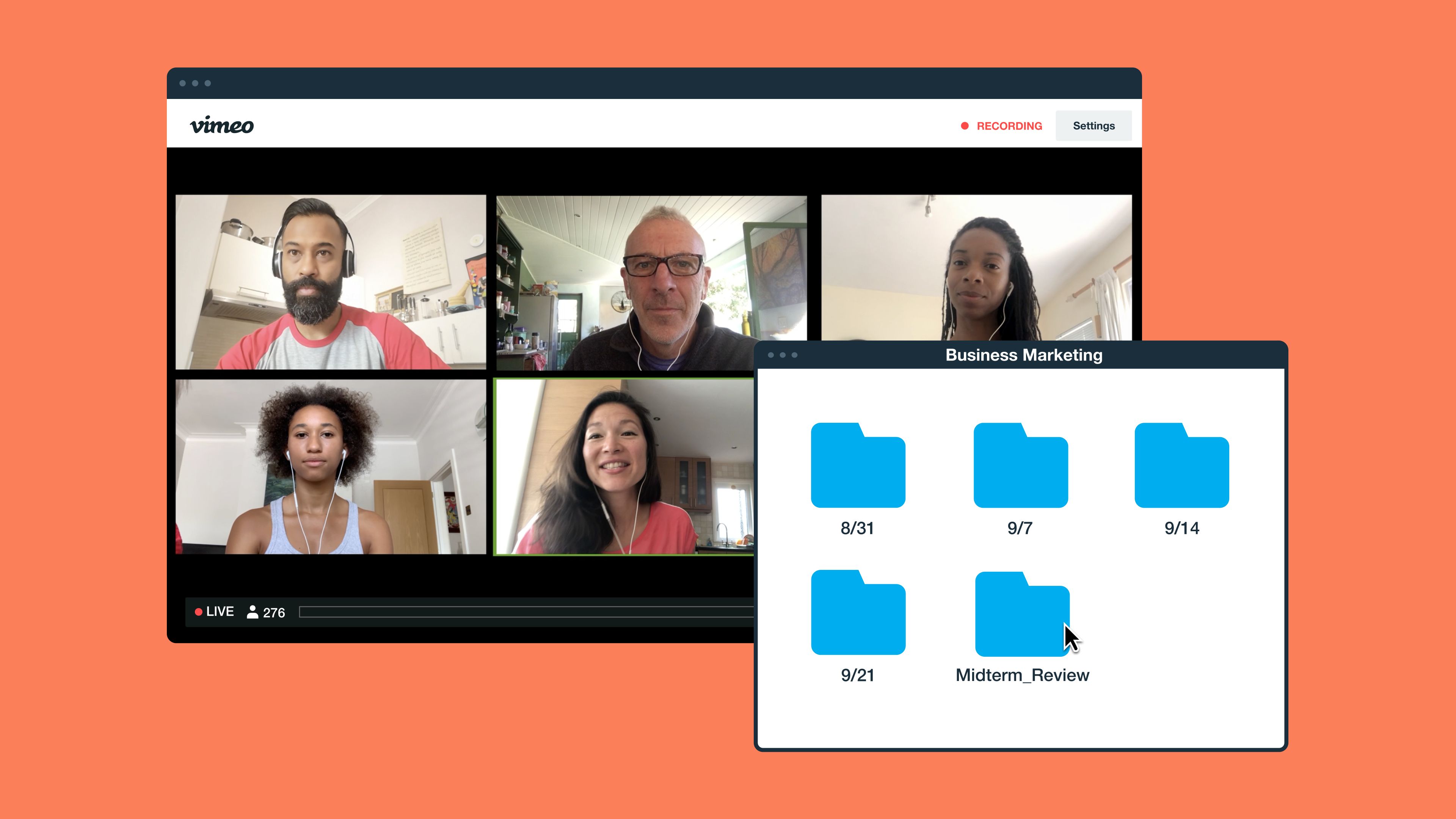Introduction
Welcome to the world of webinars on Zoom! In today’s digital age, webinars have become an increasingly popular method of communication, information sharing, and collaboration. Whether you’re a business looking to reach a wider audience, an educator wanting to deliver online classes, or an individual hosting a virtual event, Zoom webinars offer a versatile and user-friendly platform to meet your needs.
But what exactly is a webinar? A webinar, short for web-based seminar, is a live online event that allows participants to engage with speakers and presenters through real-time audio, video, and chat features. It combines the convenience and accessibility of the internet with the interactive elements of a face-to-face seminar, making it an effective tool for hosting virtual meetings, training sessions, workshops, and more.
Webinars offer a range of benefits over traditional in-person events. Firstly, they eliminate the limitations of physical venues, allowing participants from anywhere in the world to attend. This opens up endless possibilities for reaching a global audience and connecting with individuals who may not have had the opportunity to participate otherwise.
Additionally, webinars save time and resources by removing the need for travel and accommodation. Participants can join from the comfort of their own homes or offices, reducing costs and minimizing environmental impact. Moreover, webinars offer flexibility in terms of scheduling, as recordings can be made available for on-demand viewing, accommodating different time zones and allowing participants to access the content at their convenience.
Zoom has emerged as one of the leading platforms for hosting webinars. It provides a comprehensive set of features and functions that make organizing, managing, and engaging in webinars a seamless experience. In the following sections, we will explore how Zoom works for webinars, the key features it offers, and strategies for successfully running a webinar on Zoom.
So, whether you’re a seasoned webinar host or new to the concept, this guide will equip you with the knowledge and insights you need to make the most of webinars on Zoom. Let’s dive in!
What is a Webinar?
A webinar is a web-based seminar that allows individuals and organizations to communicate, collaborate, and share information with a remote audience. It is an interactive online event where participants can join from anywhere in the world using their computers, laptops, or mobile devices. Webinars are typically conducted in real-time and feature live audio and video presentations, as well as interactive elements such as chat features, polls, and Q&A sessions.
Webinars have gained significant popularity in recent years due to their convenience and effectiveness in delivering educational, informational, and promotional content. They offer a dynamic and engaging way to communicate with a large number of people simultaneously, breaking down geographical barriers and enabling productive discussions and knowledge sharing.
One of the key benefits of webinars is their versatility in various domains. Businesses and organizations use webinars for marketing and sales purposes, providing product demonstrations, hosting virtual conferences, hosting training sessions, and conducting internal meetings. Educators leverage webinars to deliver online classes, hold virtual workshops, and engage with students remotely. Additionally, individuals use webinars for personal branding, sharing expertise, and hosting interactive events such as panels and interviews.
Webinars offer several advantages over traditional physical seminars and conferences. First and foremost, they eliminate the need for travel and accommodation, making it more cost-effective and accessible for both presenters and participants. Attendees can join webinars from the comfort of their own homes or offices, saving time and resources. This also allows for a broader audience reach, as people from different geographical locations can easily attend without any logistical constraints.
Moreover, webinars provide a flexible and convenient learning experience. Many webinars are recorded and made available for on-demand viewing, allowing participants to access the content at their preferred time. This is particularly beneficial for individuals in different time zones or those unable to attend the live event. Webinars also offer interactive features such as chat boxes, polls, and Q&A sessions, enabling participants to actively engage with the presenter and fellow attendees, creating a collaborative and inclusive learning environment.
Overall, webinars have revolutionized the way information is shared, events are conducted, and learning takes place. With the advancements in technology and the availability of robust webinar platforms like Zoom, conducting effective and engaging webinars has become easier than ever. In the following sections, we will explore how Zoom works for webinars and the features it offers to enhance the webinar experience.
Benefits of Webinars on Zoom
Webinars conducted on the Zoom platform offer a wide range of benefits for both hosts and participants. Whether you are a business, educator, or individual looking to host a webinar, leveraging Zoom’s features and functionalities can significantly enhance the overall webinar experience. Let’s explore some of the key benefits of using Zoom for webinars.
1. Global Reach: Zoom allows you to connect with a global audience, eliminating geographical barriers. Participants from anywhere in the world can join your webinar, allowing you to expand your reach and engage with a diverse audience. This opens up new opportunities for networking, knowledge sharing, and collaboration on a global scale.
2. Ease of Use: Zoom is user-friendly and intuitive, making it accessible to both hosts and participants. The platform provides a streamlined interface with clear instructions on how to join and interact during the webinar. Attendees can easily access the webinar using a web browser or the Zoom mobile app, without the need for any specialized software or technical expertise.
3. Interactive Engagement: Zoom offers a variety of interactive features that make webinars engaging and interactive for participants. These features include chat boxes, polls, and the ability to raise hand for questions. By encouraging active participation, Zoom webinars create a dynamic learning environment and promote audience engagement.
4. High-Quality Audio and Video: With Zoom, you can deliver webinars with high-quality audio and video streaming. This ensures that participants can clearly hear and see the presenter, enhancing the overall webinar experience. The platform’s advanced audio and video settings allow hosts to optimize the quality based on their specific requirements.
5. Recording and Playback: Zoom allows you to easily record your webinars for future reference or for participants who couldn’t attend the live session. Recorded webinars can be shared with attendees or made available for on-demand viewing. This gives participants the flexibility to access the content at their convenience, which is particularly beneficial for time zone differences or busy schedules.
6. Collaboration and Screen Sharing: Zoom enables real-time collaboration by allowing hosts and participants to share their screens, documents, presentations, or applications. This facilitates interactive discussions and demonstrations, making the webinar more engaging and informative.
7. Analytics and Reporting: Zoom provides detailed analytics and reporting features that allow hosts to track webinar attendance, engagement levels, and participant feedback. This data can be valuable for assessing the success of the webinar, identifying areas for improvement, and measuring the impact of your content and delivery.
8. Scalability: Zoom accommodates both small and large webinars, offering scalability to suit your needs. Whether you are hosting a small training session or a large-scale virtual conference, Zoom can handle various attendee numbers without compromising the quality of the webinar.
These are just a few of the many benefits that Zoom offers for hosting webinars. With its user-friendly interface, interactive features, and robust functionality, Zoom has gained popularity as one of the leading platforms for virtual communication and collaboration. In the next sections, we will delve deeper into how Zoom works for webinars and explore its key features.
How Does Zoom Work for Webinars?
Zoom is a powerful and user-friendly platform that provides a seamless experience for hosting and attending webinars. Its intuitive interface and comprehensive features make it an ideal choice for individuals, businesses, and educators looking to conduct engaging and impactful webinars. Let’s take a closer look at how Zoom works for webinars.
1. Registration and Invitation: As a webinar host, you can set up registration forms to collect attendee information and manage participant lists. Zoom provides customizable registration options, allowing you to gather relevant details such as name, email address, and organization. Once registered, participants receive an automated confirmation email with a unique join link, facilitating easy access to the webinar.
2. Host Controls and Settings: As the webinar host, you have full control over the settings and configurations. You can mute/unmute participants, enable or disable video for attendees, and manage screen sharing permissions. Hosts can also choose to assign co-hosts or panelists to assist with managing the webinar and moderating audience interaction.
3. Audio and Video Capabilities: Zoom offers various audio options for webinars, including computer audio, telephone dial-in, or a combination of both. Participants can choose their preferred audio connection method based on their preferences and availability of internet connectivity. Video can be enabled or disabled for both hosts and participants, depending on the requirements of the webinar.
4. Screen Sharing and Content Sharing: Zoom allows hosts to share their screens, applications, or specific documents during the webinar. This feature is particularly useful for presentations, live demonstrations, and collaborative activities. Additionally, hosts can share pre-uploaded content, such as slideshows or videos, to enhance the webinar experience.
5. Interactive Features: Zoom provides a range of interactive features to engage participants during the webinar. The chat feature allows attendees to communicate with the host, ask questions, and chat amongst themselves. Polls can be created to gather instant feedback or gather opinions from the audience. The Q&A feature allows participants to submit questions, which can be answered live by the host or panelists.
6. Breakout Rooms: Zoom’s breakout rooms feature allows hosts to split participants into smaller groups for discussions or activities. This is particularly valuable for interactive workshops, group exercises, or networking sessions. Breakout rooms can be pre-assigned or created on-the-fly during the webinar, providing a personalized and collaborative experience.
7. Recording and Playback: Zoom allows hosts to record webinars for future reference or for participants who couldn’t attend the live session. The recording captures audio, video, screen sharing, and other interactive elements. The recorded webinar can be shared with attendees or made available for on-demand viewing, providing flexibility and convenience for participants.
8. Reporting and Analytics: Zoom provides analytics and reporting features to help hosts assess the success of their webinars. You can gather data on participant engagement, attendance rates, and feedback. This information can be used to improve future webinar strategies, measure the impact of the content, and make data-driven decisions to enhance the overall attendee experience.
Overall, Zoom offers a comprehensive set of features and functionality that simplifies the process of hosting a webinar. Its intuitive interface, interactive features, and high-quality audio and video capabilities create an engaging and productive environment for both hosts and participants. In the next sections, we will delve deeper into the specific features and functions of Zoom webinars that contribute to their success.
Features and Functions of Zoom Webinars
Zoom webinars offer a plethora of features and functions that elevate the webinar experience for both hosts and participants. These features are designed to enhance engagement, facilitate interaction, and deliver high-quality virtual events. Let’s explore some of the key features and functions that make Zoom webinars stand out.
1. Large-Scale Webinars: Zoom webinars are designed to accommodate a large number of participants, making them suitable for hosting virtual conferences, seminars, and company-wide events. With Zoom, you can host webinars with up to thousands of attendees, ensuring that you can reach and engage with a wide audience.
2. Panelists and Attendee Management: Zoom allows hosts to invite panelists and assign them specific roles during the webinar. Panelists can participate in discussions, share their screens, or be assigned as co-hosts to assist with managing the webinar. Hosts can also manage attendees by muting/unmuting them, controlling video permissions, and managing participant lists.
3. Brand Customization: Zoom webinars provide options for brand customization, allowing hosts to add their company logo, colors, and backgrounds to create a personalized and professional webinar environment. This helps to reinforce brand identity and create a cohesive visual experience for participants.
4. Registration and Reporting: Zoom provides a built-in registration feature that allows hosts to create customized registration forms to collect attendee information. This data can be used to manage participant lists, generate reports on attendee demographics, and track registration numbers. This information is valuable for post-webinar follow-ups, marketing analysis, and assessing attendee engagement.
5. Interactive Engagement: Zoom webinars offer a range of interactive features to engage participants actively. The chat feature allows attendees to communicate with the host and fellow participants, fostering real-time discussion. Polls can be created to gather instant feedback or gauge audience opinions on specific topics. The Q&A feature allows participants to submit questions, which can be addressed during the webinar.
6. Spotlight and Speaker View: Zoom offers different viewing options to spotlight specific speakers or presenters during the webinar. The spotlight view focuses the attention of participants on the active speaker, ensuring clear visibility and minimizing distractions. The speaker view allows hosts to control the layout and arrangement of video feeds, maximizing the engagement and impact of the webinar.
7. Screen Sharing and Content Sharing: Zoom allows hosts to share their screens, as well as specific applications or documents during the webinar. This feature is useful for delivering presentations, live demonstrations, or guiding participants through specific content. Hosts can also share pre-uploaded content such as slideshows, videos, or supporting documents to enhance the webinar experience.
8. Breakout Rooms: Zoom’s breakout rooms feature allows hosts to create smaller discussion groups within the larger webinar. This feature is valuable for interactive workshops, group exercises, or networking sessions. Participants can be assigned to pre-set breakout rooms or manually moved between rooms, allowing for personalized and collaborative interactions.
9. Recording and Playback: Zoom allows hosts to record webinars for future reference or for participants who couldn’t attend the live session. The recording captures audio, video, screen sharing, and other interactive elements, providing a comprehensive record of the webinar. These recordings can be shared with attendees or made available for on-demand viewing.
These are just a few of the features and functions that Zoom webinars offer. The platform’s comprehensive toolkit empowers hosts to deliver impactful presentations, facilitate meaningful discussions, and create engaging virtual experiences for their audiences. In the next sections, we will delve deeper into the process of creating, managing, and running a webinar on Zoom.
Creating and Scheduling a Webinar on Zoom
Creating and scheduling a webinar on Zoom is a straightforward process that allows hosts to plan and organize their virtual events efficiently. Zoom provides a user-friendly interface with intuitive features that simplify the webinar setup. Let’s explore the steps involved in creating and scheduling a webinar on Zoom.
1. Sign in to Zoom: To get started, sign in to your Zoom account. If you do not have an account, you can easily create one for free on the Zoom website.
2. Schedule a webinar: Once you are signed in, navigate to the “Webinars” tab and click on “Schedule a Webinar.” This will open up the webinar scheduling form.
3. Fill in webinar details: In the scheduling form, provide relevant details about your webinar. This includes the webinar topic, description, date, time, and duration. You can also choose whether to require registration for the webinar or enable additional settings such as Q&A, chat, and screen sharing.
4. Customize registration options: If you choose to require registration, customize the registration form by adding fields for participant information. This allows you to collect data such as names, email addresses, and organizations. You can also set up automated email confirmations and reminders for registered participants.
5. Set up panelists: If you have panelists or co-hosts for your webinar, you can add them in the scheduling form. Panelists will have additional privileges during the webinar, such as sharing their screens and participating in discussions.
6. Generate webinar join links: Once you have filled in all the necessary details, click on the “Save” or “Schedule” button. This will generate unique join links for the webinar, which you can share with participants via email, calendar invitations, or through other communication channels.
7. Send webinar invitations: Zoom provides options for sending invitations directly from the platform. You can choose to send automated email invitations to registered participants, including the necessary join links and any additional instructions or materials.
8. Prepare webinar content: Prior to the webinar, prepare your content such as presentations, videos, or documents that you wish to share during the session. Ensure that you have a stable internet connection, a working microphone, and a webcam if you plan to use video.
9. Start the webinar: At the scheduled time, start the webinar by clicking on the provided join link. Zoom will open the webinar interface, and you will have access to host controls and features for managing the webinar.
10. Manage and engage participants: During the webinar, utilize the various features provided by Zoom to engage and interact with your participants. Use the chat feature to communicate with participants, conduct polls for gathering feedback, and encourage participation through Q&A sessions. You can also share your screen or content to deliver your presentation or provide visual aids.
By following these steps, you can create and schedule a webinar on Zoom efficiently. The platform’s user-friendly interface and customizable features empower hosts to plan and deliver engaging virtual events. In the next sections, we will explore further details on managing and running a webinar on Zoom.
Managing and Running a Webinar on Zoom
Once you have scheduled your webinar on Zoom, it’s time to prepare for the smooth and successful execution of your virtual event. Managing and running a webinar on Zoom involves a combination of pre-webinar preparations, effective hosting during the session, and post-webinar follow-ups. Let’s explore the key aspects of managing and running a webinar on Zoom.
1. Pre-Webinar Preparations: Before the webinar, make sure to familiarize yourself with the Zoom webinar interface and features. Test your audio and video to ensure they are working properly. Prepare your presentation materials or any other content you plan to share during the session. Review the agenda and ensure that all panelists are aware of their roles and responsibilities.
2. Participant Management: As the webinar host, you have control over managing participants during the session. Use Zoom’s participant management tools to mute/unmute participants, enable or disable video for attendees, and manage screen sharing permissions. This helps maintain control and minimize disruptions during the webinar.
3. Engagement and Interaction: To make the webinar interactive and engaging, utilize the various features provided by Zoom. Encourage active participation through the chat feature, where attendees can ask questions, provide feedback, or interact with one another. Conduct polls to gather instant feedback or gauge audience opinions on specific topics. Allocate time for Q&A sessions to address participant queries and concerns.
4. Content Sharing: Take advantage of Zoom’s screen sharing and content sharing features to deliver your presentation or showcase relevant materials. Share your screen to display slideshows, videos, or demonstrations. Utilize the annotation tools to highlight key points or draw attention to specific areas of your content. This enhances the visual experience and ensures that participants are aligned with your presentation.
5. Panelist Contributions: If you have panelists or co-hosts, maximize their contributions to the webinar. Assign specific segments or topics for each panelist to present or lead. Give panelists control over sharing their screens, enabling them to share relevant content or provide additional insights. Panelists can also help field questions from participants and contribute to the overall engagement of the session.
6. Monitor Chat and Q&A: Keep an eye on the chat and Q&A sections during the webinar to ensure smooth communication and address participant queries. Engage with participants by responding to their questions or comments in real-time. Consider appointing a moderator or co-host to assist in monitoring and managing the chat and Q&A, especially during larger webinars with higher attendee numbers.
7. Time Management: Manage the webinar according to the scheduled time and agenda. Keep track of time and ensure that you cover all the planned topics within the allocated duration. If necessary, provide time reminders and keep the webinar on track to avoid running over the allotted time.
8. Post-Webinar Follow-ups: After the webinar, make sure to follow up with attendees. This can include sharing the recording of the webinar for those who couldn’t attend, sending a thank-you email to participants, or providing additional resources or materials related to the webinar content. Collect feedback from participants to assess the success of the webinar and identify areas for improvement in future events.
By effectively managing and running your webinar on Zoom, you can create a seamless and engaging experience for your attendees. Leveraging the platform’s features, engaging participants through interaction, and ensuring a well-organized session contribute to the overall success of your webinar. In the next sections, we will explore strategies for engaging and interacting with participants on Zoom webinars.
Engaging and Interacting with Participants on Zoom Webinars
Engaging and interacting with participants is key to creating a successful and impactful webinar experience. Zoom webinars provide a range of features that facilitate active participation and meaningful engagement. Effectively utilizing these features can help create a dynamic and interactive environment for your attendees. Let’s explore strategies for engaging and interacting with participants on Zoom webinars.
1. Open and Interactive Communication: Encourage open communication by utilizing Zoom’s chat feature. Encourage participants to ask questions, share their thoughts, and engage in discussions through the chat. Monitor the chat regularly and respond to queries, comments, and feedback in real-time. Acknowledge participants by name during the webinar to create a sense of connection and inclusivity.
2. Polls and Surveys: Use Zoom’s polling feature to engage attendees and gather their opinions. Conduct polls during the webinar to gauge participant understanding, preferences, or feedback on specific topics. This interactive element breaks up the session, encourages active involvement, and provides valuable insights for both presenters and participants.
3. Q&A Sessions: Allocate dedicated time for Q&A sessions during your webinar to address participant queries and concerns. Encourage attendees to submit their questions through the Q&A feature in Zoom. You can either answer the questions during the webinar or allocate specific time slots for a comprehensive Q&A session. Engaging with participants in this way personalizes the experience and enhances learning outcomes.
4. Engaging Visuals: Utilize visual aids such as slideshows, videos, or live demonstrations to enhance engagement. Clearly illustrate key points using visuals to support the narrative. Utilize Zoom’s screen sharing feature to display your content and ensure that participants can see and follow along with the visuals being presented.
5. Breakout Rooms: Divide participants into smaller breakout rooms for interactive discussions, group activities, or networking sessions. Utilize Zoom’s breakout rooms feature to facilitate collaboration and engagement among attendees. Assign topics or tasks to each breakout room and provide clear instructions. This enhances peer-to-peer interactions, creates a personalized experience, and fosters networking opportunities.
6. Gamification: Incorporate gamification elements to make the webinar experience more enjoyable and interactive. For example, you can include quizzes or challenges during the session to test participant knowledge or reward engagement. Consider using Zoom’s poll feature as a fun quiz format, where participants can guess the correct answers and see instant results.
7. Multimedia Engagement: Integrate multimedia elements to add variety and engagement. Show video clips, play audio recordings, or incorporate interactive multimedia tools. This keeps participants engaged and provides different modes of content delivery.
8. Engage with Social Media: Encourage participants to share their thoughts and engage with your webinar on social media platforms. Create a unique hashtag for your webinar and invite attendees to share their takeaways, ask questions, or provide feedback using the hashtag. This expands the reach of your webinar and provides an avenue for ongoing interaction even after the session has ended.
By implementing these strategies, you can create an engaging and interactive webinar experience for your participants on Zoom. Utilizing the platform’s features effectively and fostering meaningful connections with attendees contribute to a successful and impactful webinar. In the final sections, we will provide some tips for a successful webinar on Zoom.
Tips for a Successful Webinar on Zoom
Hosting a successful webinar on Zoom requires careful planning, effective execution, and engaging presentation skills. To ensure that your webinar delivers the desired impact and achieves your objectives, consider implementing the following tips:
1. Prepare and Rehearse: Thoroughly prepare your content and rehearse your presentation to ensure a smooth and confident delivery. Familiarize yourself with the Zoom interface, features, and controls to avoid any technical glitches during the webinar.
2. Engage Early: Begin engaging with your attendees early on by sending out webinar reminders, encouraging pre-webinar questions, or providing pre-session reading materials. This sets the stage for active audience participation right from the start.
3. Create Engaging Slides: Craft visually appealing and concise slides to support your presentation. Use clear headlines, visuals, and bullet points to convey your message effectively. Avoid overcrowding slides with excessive text, as this may overwhelm participants.
4. Use Stories and Examples: Incorporate relatable stories or real-life examples to captivate your audience and make the content more relatable. Stories evoke emotions and enhance the overall learning experience for participants.
5. Maintain a Conversational Tone: Adopt a conversational and friendly tone during the webinar to establish a connection with your audience. Avoid using jargon or complex language that may alienate or confuse participants. Use clear and concise language to convey your ideas.
6. Encourage Interaction: Actively encourage audience interaction through the chat and Q&A features. Respond promptly to participant queries and comments to foster engagement. Incorporate live polls and surveys to encourage active participation and gather valuable feedback.
7. Engage Visual and Vocal Cues: Utilize visual cues such as hand gestures and facial expressions to add emphasis and convey emotions. Vary your vocal tone, pace, and volume to maintain audience interest and engagement throughout the session.
8. Time Management: Manage your time effectively and allocate sufficient time for different segments of your webinar. Ensure that you have enough time for Q&A sessions and audience interaction. Stick to the scheduled agenda and avoid running over time.
9. Utilize Breakout Rooms: Incorporate breakout rooms into your webinar to encourage small group discussions and collaboration. This allows participants to actively engage with each other and promotes a more personalized experience.
10. Follow up and Foster Engagement: After the webinar, follow up with attendees by sending a thank-you email, sharing relevant resources, or inviting participants to continue the conversation on social media platforms. Maintaining post-webinar engagement helps reinforce key takeaways and strengthens the connection with participants.
11. Gather Feedback: Collect feedback from participants to assess the success of your webinar and identify areas for improvement. Use this feedback to refine your future webinars and enhance the overall attendee experience.
By implementing these tips, you can host a successful webinar on Zoom that engages participants, delivers valuable content, and achieves your desired goals. Leveraging the platform’s features, delivering a well-prepared presentation, and fostering participant interaction will contribute to a memorable and impactful webinar experience.
Conclusion
Webinars on Zoom have transformed the way we communicate, educate, and collaborate in the digital age. By utilizing the comprehensive features and user-friendly interface of Zoom, hosting engaging and interactive webinars has become easier than ever. Whether you’re a business looking to connect with a global audience, an educator seeking to deliver online classes, or an individual hosting virtual events, Zoom provides the tools and functionality to meet your needs.
Through this guide, we have explored the concept of webinars, the benefits of using Zoom as a webinar platform, and the step-by-step process of creating, scheduling, managing, and running successful webinars. We have discussed the features that make Zoom webinars standout, such as large-scale capabilities, customization options, interactive engagement features, and robust reporting and analytics.
To ensure a successful webinar, we provided tips on preparation, engagement techniques, maintaining an interactive environment, and gathering valuable feedback. By following these suggestions, you can optimize the webinar experience for your participants, leave a lasting impact, and achieve your desired goals.
Remember that a successful webinar goes beyond the technical aspects; it involves creating meaningful connections, delivering engaging content, and fostering active participant interaction. By leveraging the features of Zoom, preparing compelling visuals, and incorporating interactive elements, you can create an engaging and valuable experience for your attendees.
As you continue your journey of hosting webinars on Zoom, be sure to stay updated with the platform’s latest features and enhancements. Keep an eye out for new updates and explore additional strategies to further enhance your webinar delivery and participant engagement.
Now armed with the knowledge and tips provided in this guide, you are ready to dive into the world of webinars on Zoom confidently. May your webinars be informative, engaging, and successful, as you connect with your audience, share valuable knowledge, and make a lasting impact through this modern form of communication.

























